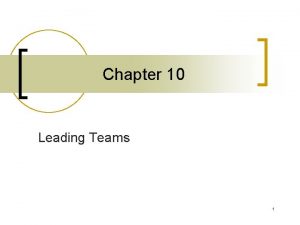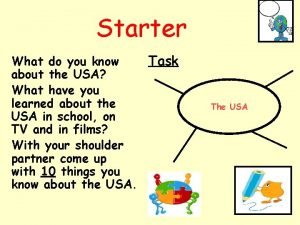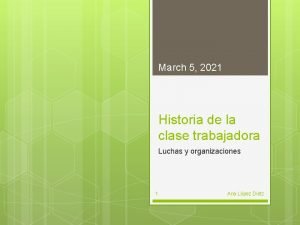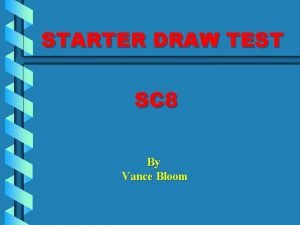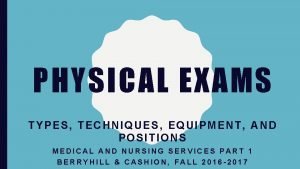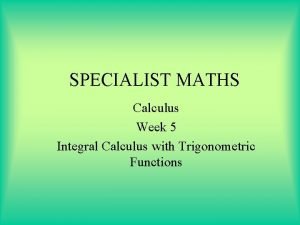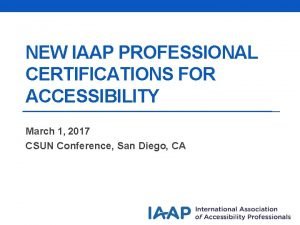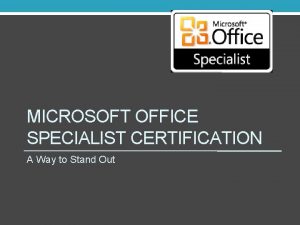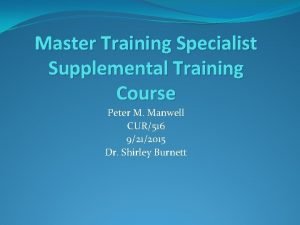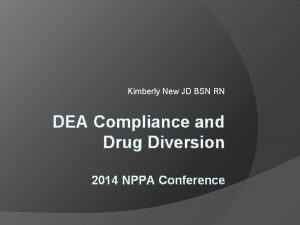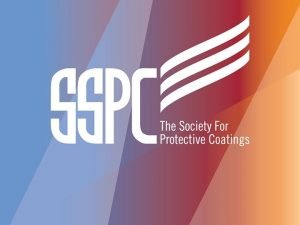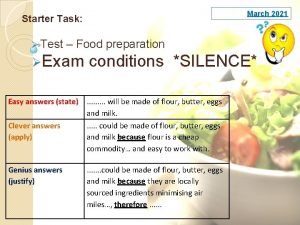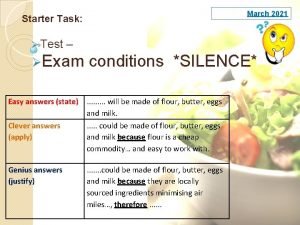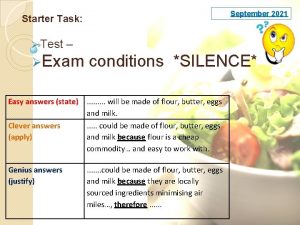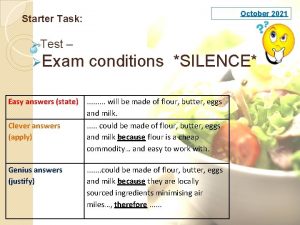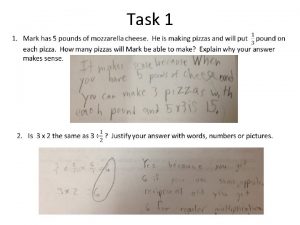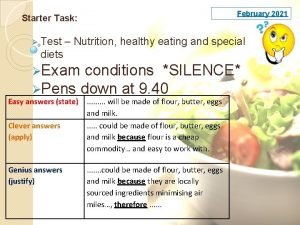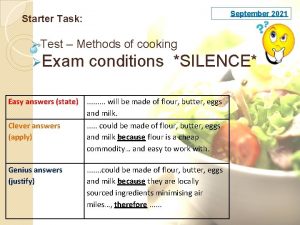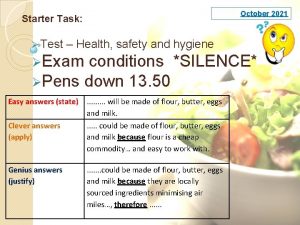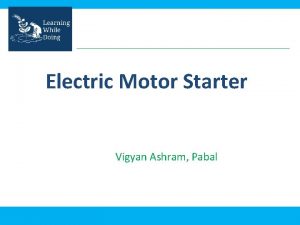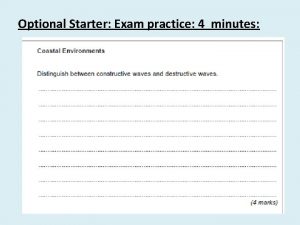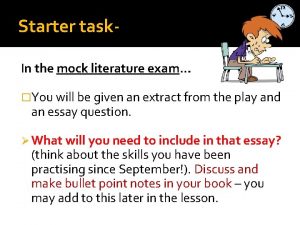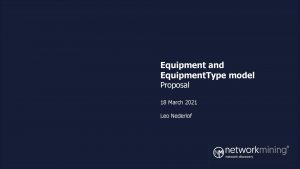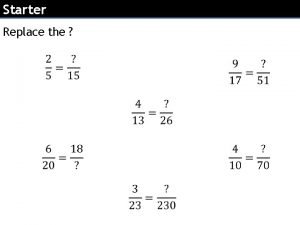March 2021 Starter Task Test Specialist equipment Exam





















- Slides: 21

March 2021 Starter Task: Ø Test – Specialist equipment ØExam conditions *SILENCE* ØPens down at 9. 40 Easy answers (state). . will be made of flour, butter, eggs and milk. Clever answers. . . could be made of flour, butter, eggs (apply) and milk because flour is a cheap commodity… and easy to work with. Genius answers (justify) . . . . could be made of flour, butter, eggs and milk because they are locally sourced ingredients minimising air miles…, therefore. . .

Lesson Objectives Skills and preparation ØIdentify high level skills ØExplain how to develop them ØList a variety of food products that meet them Ø High level skills include: ØPastry making – shortcrust, pate sucre, choux ØRoux based sauces ØMeringues and pavlovas ØMeat and fish cookery (high risk foods) ØRich yeast doughs ØComplex accompaniments and garnishes

Skills and presentation Ø Medium level skills: Ø Simple cakes, biscuits and cookies Ø Vegetable and fruit dishes requiring even sizes, e. g. stir fry, Ø Cheesecakes and similar desserts Ø Simple sauces, e. g. red wine Ø Puff pastry items using ready made pastry Ø Basic skills: Ø Convenience foods and standard components Ø Presentation must consider: Ø Final appearance Ø Colour Ø Use of decoration and garnish Ø Correct texture or consistency Ø Flavour and seasoning Ø Temperature

Skills and presentation Ø Make a list of each ingredient in your final exam Ø Discuss their function using the following headings: ØNutritional ØPhysical ØSensory

Lesson Objectives Preparing different foods ØIdentify a range of foods ØExplain how to prepare them ØDescribe their uses Ø 3 main animals eaten include: Ø Pigs (ham, gammon, pork (short and fat pigs) and bacon (long and thin pigs)) Ø Sheep (lamb (less than 6 mths old) and mutton) Ø Cows – mainly bullocks, females needed for milk (beef and veal) Ø We also eat poultry – chicken, turkey, goose and duck Ø The edible internal organs of animals are known as offal

Meat and poultry Ø Meat is made up from muscle fibres held by connective tissue, the harder working the tougher the meat Ø Meat and poultry carry bacteria that can cause food poisoning and must be stored and cooked correctly Ø Lamb can be served pink, beef rare but all others must be cooked thoroughly Ø Task: suggest a different cooking method for the following and dish that could be made: Øpork chops Øleg of lamb Øpork fillet Øsirloin steak

Fish Ø There are 3 types: ØOily – salmon, tuna, sardines and mackerel ØWhite – cod, haddock, plaice ØShellfish – prawns, shrimps, scampi and crabs Ø The flesh is made of muscle and connective tissue Ø Checks that must be made to ensure freshness include: ØSalty and fresh smell ØBright red gills ØClear eyes Ø Task: identify a range of dishes that use: plaice, clams, tinned salmon, king prawns, cod, smoked haddock, herrings and mussels

Pasta, rice and other cereals Ø The main cereals we eat are wheat, rice, corn, oats, barley and rye Ø They can be used as: ØGrains – whole or crushed ØFlour – pasta, bread, cakes, pastries ØCereals – rice krispies, porridge Ø Different wheat produces different flours with different gluten contents: ØStrong – bread, pasta Ø Weak – biscuits Ø Rice and pasta are an excellent alternative to potatoes because they are cheap, easy to store, long shelf life, cook quickly, good nutritional value, versatile, varied in type

Pasta, rice and other cereals Ø Rice is the grain of cultivated grass and is either short or long Ø Short clumps together when cooked and is used for puddings Ø Long remains separated and is used for curries

Fruit and vegetables Ø Useful in cookery due to colour, texture, taste and versatility, high in nutrients and RDA is 5 a day Ø Fruit can be: ØDried - currants, sultanas ØCanned – mandarines ØFrozen – raspberries ØJammed or preserved ØGlace – cherries ØCrystalised – peaches ØCandied – preserved Ø The fruits of a plant always contain the seeds, stone or pips of a new plant

Fruit and vegetables Ø Vegetables come from any part of a plant: Ø Roots – carrots, parsnips, beetroot Ø Tubers – potatoes Ø Bulbs – onions, garlic Ø Stems – asparagus, celery Ø Leaves – cabbage, lettuce, spinach Ø Flowers – cauliflower Ø Seeds – peas, sweetcorn Ø Fungi - mushroom Peppers, tomatoes, courgette, cucumber and marrow are actually fruits Ø Task: practice the following cuts: Ø Ø Julienne – matchsticks Ø Brunoise – dice from julienne Ø Jardiniere – batons Ø Macedoine – medium dice Ø Paysanne – triangles, circles, squares

Eggs Ø Ø Ø We eat eggs from hens, turkeys, geese, ducks, quail and gulls They are graded in 4 sizes: small, medium, large and very large When buying eggs look for: cleanliness, firm yolks with even colour Eggs are high in protein and also provide energy fat minerals and vitamins They should be stored in a cool dry place, the shells are porous and will absorb strong smells They are extremely versatile and can be used for: Ø Whisking – swiss roll Ø Glazing – pasty Ø Setting – quiche Ø Binding – fishcakes Ø Coating – scotch eggs Ø Emulsify – mayonnaise

Dairy products Ø Milk is a complete food because it contains all the nutrients the body needs Ø Most milk comes from cows but can also come from sheep, goats, camels and horses and plants and beans, e. g. soya Ø Milk comes in a variety of formats: Ø Whole – full fat Ø Semi skimmed – half fat Ø Skimmed – low fat Ø Ultra heat treated (UHT) Ø Sterilised Ø Evaporated Ø Condensed Ø Dried Ø Vegetable – coconut, soya

Milk products Ø Ø Ø Ø Cream – various types: Ø Single – 18% fat Ø Clotted – 55% fat Ø Long life available in cartons or cans Butter is made from cream (as you know if you whisked too much! Comes salted or unsalted or Indians use clarified (ghee), can be used for many things: parsley butter, butter cream Yoghurt comes in many formats: bio, Greek, fromage frais Ice cream is made from milk, cream eggs and sugar Cheese is made from cows’ or goats’ milk, high in protein and fat, can be hard, soft or blue veined, cheese is good for sauces, cheesecake or pastries Task: list as many cheeses as you can in the following categories: hard, soft and blue Task describe 6 different ways of using cheese

Vegetable protein Ø Textured soya is a protein made from wheat and soya beans Ø Quorn is produced from a plant derived from the mushroom family Ø Tofu is made from soya beans

Sauces ØA sauce is a liquid that has been thickened and should be smooth, shiny and well seasoned, they are made in a variety of ways: Ø Roux – equal quantities of fat and flour Ø Cornflour or arrowroot – blended to a paste Ø Beaten eggs Ø Sauces: Ø Add colour, flavour and texture Ø Bind Ø Improve appearance Ø Add value Ø Counteract richness

Hot and cold desserts Ø There are many different types and can be made to suit all needs, examples include: Ø Egg based – crème caramel, bread and butter – egg coagulates to set Ø Steamed – jam roly poly, treacle - stodgy and heavy served with a sauce Ø Meringue – pavlova, baked alaska Ø Milk – rice or semolina Ø Desserts come with a range of sauces including: almond, melba, rum or brandy Ø Pastry products using shortcrust, choux or puff include: profiteroles, lemon meringue pie and apple pie Ø Task: list 5 dishes made from whisked egg, 5 types of pastry, for hot puddings that are baked and 6 cold desserts using pastry

Dough products Ø Ø Ø Ø Ø Made from yeast and requires high gluten (protein found in wheat) flour Gluten, when mixed with water becomes stretchy and helps products rise Oil is added to increase shelf life, add nutritional value, texture and flavour Kneading helps the dough to stretch It kneads to prove in a warm place to activate the yeast (using warm water speeds the process up) Should be cooked in a hot oven to help the yeast rise before the bread sets, the bread can be brushed with egg or butter to give a glaze Tap on the bottom to see if it is ready Bread can be shaped in many ways, e. g. loaf, plait or knot and topped with many things: seeds, cheese Task: find out 10 different global breads

Cakes, sponges, scones and biscuits Ø There are 4 different methods: Ø Rubbing in – used for cakes, scones and pastries – fat cut into chunks and using fingertips rubbed in until breadcrumbs are formed, other ingredients are added before the liquid to bind, baked in a fairly hot oven (190 -200 C) Ø Creaming – used for cakes that contain more fat and sugar compared to flour – fat is creamed with the sugar to aerate, eggs are slowly added mixing vigorously, sr flour is sifted in with flavouring mixed in, baked at 180190 C Ø Whisking – used for light sponge cakes with no fat – eggs and sugar are mixed well to a peak, flour is sifted and gently folded in, baked at 200 for 10 -12 mins Ø Melting – used for flapjacks – fat and syrup are melted and then added to all other ingredients Ø Task: list 2 products that can be made using each method

Cakes, sponges, scones and biscuits Ø There are many types of pastry: ØShort crust – used for savoury and sweet, e. g. mince pies and quiche ØPate sucre – used for sweet dishes, e. g. LMP ØCheese – used for cheese straws and savoury flans ØChoux – used for eclairs and profiteroles ØPuff/rough puff/flaky – used for sweet and savoury, e. g. sausage rolls ØFilo – sweet and savoury, e. g. strudel Ø Task: list 3 products for each pastry

Convenience products Ø A product that is prepared to aid assembling, many reasons for using convenience products include: Ø Saves time, speeds preparation Ø Saves money (labour/machinery) Ø Long shelf life Ø Tastes the same Ø Easy to assemble Ø Easy to store Ø Good for emergencies Ø Types include: Ø Fresh – sliced bread, ready made cakes Ø Canned – fruit, soup Ø Dried – milk, pasta Ø Frozen – pies, pastry Ø Chilled – coleslaw, pate Ø Vacuum packed – fruit, vegetables Ø Portion controlled – butter, jam Ø Homework: Complete revision material/revise for test
 March march dabrowski
March march dabrowski Difference between group and team
Difference between group and team Starter task
Starter task Exam invigilator starter pack
Exam invigilator starter pack Weekly quiz answers 2021
Weekly quiz answers 2021 March 5 2021
March 5 2021 Starter draw test
Starter draw test Tiered task bias task
Tiered task bias task Semifowlers
Semifowlers Shorttask
Shorttask Creative arts grade 9 lesson plans term 3
Creative arts grade 9 lesson plans term 3 Internal medicine shelf exam percentiles
Internal medicine shelf exam percentiles Ap bio exam grading scale
Ap bio exam grading scale Non specialist audience
Non specialist audience Spec maths formula sheet
Spec maths formula sheet Seo punto rojo
Seo punto rojo Prm specialist
Prm specialist Cpacc exam
Cpacc exam Do microsoft office specialist certifications expire
Do microsoft office specialist certifications expire Master training specialist certification
Master training specialist certification Norditropon
Norditropon Coating application specialist
Coating application specialist

